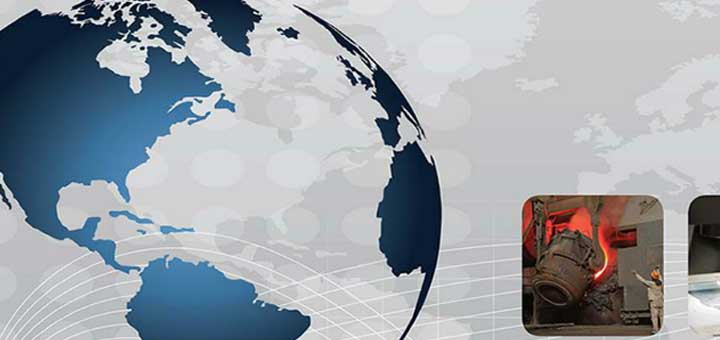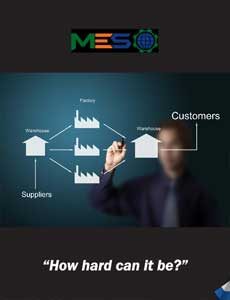Pacific Harbor Line
“How hard can it be?”
Hiten Shah, founder, CEO, and owner of MES in Lewis Center, Ohio, has one simple question he asks himself every time a customer challenges his company to go above and beyond, or provide a product or service it has never had or done before. And that question is: “How hard can it be?” This entrepreneurial operating ethos had helped propel his start-up, supply chain management and logistics operation from $1 million in sales in 2010, to $65 million, today.
Shah started his career as a plastics engineer but over time wore many different professional hats: manager, process engineer, vice president of sales. In 1997, he started the company known today as Marketing and Engineering Solutions (MES, Inc.). In 2006, while doing some research in India for a friend’s firm, he came upon a number of suppliers who were manufacturing some specific products his own company was providing to its customers. “We had some companies in medical and lighting who were looking for the specific products that I had evaluated in India,” he says. “So, in early 2007, we started to work in earnest, trying to sell some of the castings that were made by our Indian suppliers in lighting and medical. We got some contracts right away and we started shipping products from India.”
Soon, some of his customers began requesting other services, such as supply chain and warehousing, in addition to shipping, in effect, asking MES to be a logistics manager as well as a supplier. Although he knew very little, at first, about overseeing a global supply chain, Shah asked himself, again, “How hard can it be?” and went to work. “So we have grown in response to customer needs,” he explains.
When the company was asked to manage a supply chain from China, it responded. By 2008 MES was doing chain management work in both countries and warehousing products in Ohio. By 2009, Shah began to see the scale-up opportunities inherent in the business model, so he hired his first source quality engineer and other personnel, shifting from a small sourcing company to the company it is today – a full-service provider of global manufacturing and supply chain management services.
MES sources manufactured components from India, China, Australia, Taiwan, Vietnam, and Malaysia. In China, alone, where it has two offices, it has a supplier base of 227 manufacturing companies. Two offices in India order from 200 different suppliers in that country. It has warehouses in Ohio, California, Texas, and Mexico. It has doubled its employee count in the last year and a half from 40 to 80 people. Its clients come predominantly from the lighting, automotive, heavy equipment, medical, and agricultural sectors, and are generally tier-one, OEM companies that require large supplies of “high-mix” products. Companies that make lighting components – housings and fixtures – comprise the largest portion of its business. It also has some clients in the electronics and communications sectors.
Shah describes a five-step process that MES employs in managing its customers’ supply chain logistics. “Number one: we help find qualified suppliers. Second is: we do all kinds of quality audits and inspections. We don’t bring any suppliers on unless we have an engineer that can visit them within eight to ten hours by plane, train, bus, whatever. Boots on the ground is one of our key things. And in India, and China, and Hong Kong, we have really invested financial and logistics management resources, supply chain managers, sourcing engineers, and quality engineers. They are all very well equipped with a broad spectrum of skill sets needed to make sure that we have our supply chain engine humming.
“Third: we consolidate shipments at various ports in India, China, Taiwan, and Vietnam. Fourth: we do warehousing for our customers in Ohio, California, Texas, and Monterey, Mexico. And then, fifth: we do some domestic value-added operations either in-house, or we send out as needed.” Some of MES’ value-added services include the following:
• Aluminum die casting
• Brass die casting
• Investment (also known as lost wax) casting
• Iron die casting
• Zinc die casting
• Forging
• Stamping
• Rubber and plastic molding
• CNC (Computerized Numerical Control) machining
• Assembling
• Repackaging
Shah believes that MES has found a niche that it can fill very well, without strong competition. “We have not found companies that are identical to us,” he says, “at least in the lighting and agriculture markets. There are companies that do this in the automotive space. But most of our competition is customers trying to do supply chain, themselves.” Of course, Shah believes that with MES’ strong business automation portals and systems, combined with its broad supplier base and best-in-class supplier strategies, there are very few good reasons for a company not to let MES do the heavy lifting.
And yet, while Shah’s oft-repeated question to himself, is “How hard can it be?”, his business model is not to say yes to every single request his company gets, preferring, rather, to work with established customers while deepening those already strong relationships. For example, MES will only get involved with a new commodity, such as copper or aluminum, if it already has one good anchor company with whom it can work. “If we know that we have a good customer relationship and they want a specific product commodity that’s not in our bailiwick, we will do some intense work on the sourcing side. We’ll get all sorts of in-depth reviews before we start going down that path,” he maintains. “Everything we’ve done, is basically choosing our customers, and when they challenge us to do something, we really try to go out of our way to see if we can help them.”
Over the next few years, Shah would like to see MES rebalance its portfolio, pursue new opportunities in warehousing, and expand its commodities menu. “We’re looking at a new warehousing location in Tijuana for one customer,” he says. “Mexico has grown to be 45 percent of our business, so we’re investing heavily in Mexico. We were using third party warehouses, but we were not getting the service for the costs, so last year, we decided that we would have our own warehouse. We leased a building and started to invest in the racks, and warehouse management systems, and people. We see that as a big, big step forward and we’d like to do a couple of more additions in Mexico in warehousing over the next 24 months.”
He continues: “We have very well-defined business objectives and we want to double in size by 2020. Lighting is a significant portion of our business, but we want lighting to be under 40 percent of our business from 80 percent this year. We want one tenth to 15 percent to be automotive business, because that’s going to keep us sharp in our quality and supply chain methods. China was 95 percent of our sources two years back; this year, it’s probably going to be under 70; we want China to be under 40 percent of our global resources. There are a lot of agriculture business opportunities that we want to chase, and light industrial. And then we’re also trying to develop across more commodities, so we want more copper, and more forgings rather than just castings, which has been a dominant portion until a year or two back.”
Finally, Shah outlines MES’ three ongoing missions: “One is: win-win engineering solutions for our customers; second is: creating a challenging and exciting work environment for our associates, globally; and third is developing quality suppliers across the globe. In five years from now, we could be buying from Africa or from Latin America. So we’ll chase down wherever the best suppliers are and spend time and energy developing relationships with them, developing their quality systems, and focusing on our customers’ issues. We want to be an extremely energized and engaged-workforce company that is very aggressively focused on its customers, and not bashful about going into any country or any suppliers where we think we can get good cost, quality and delivery. We want it all,” he admits.
Now, really, how hard can it be?


